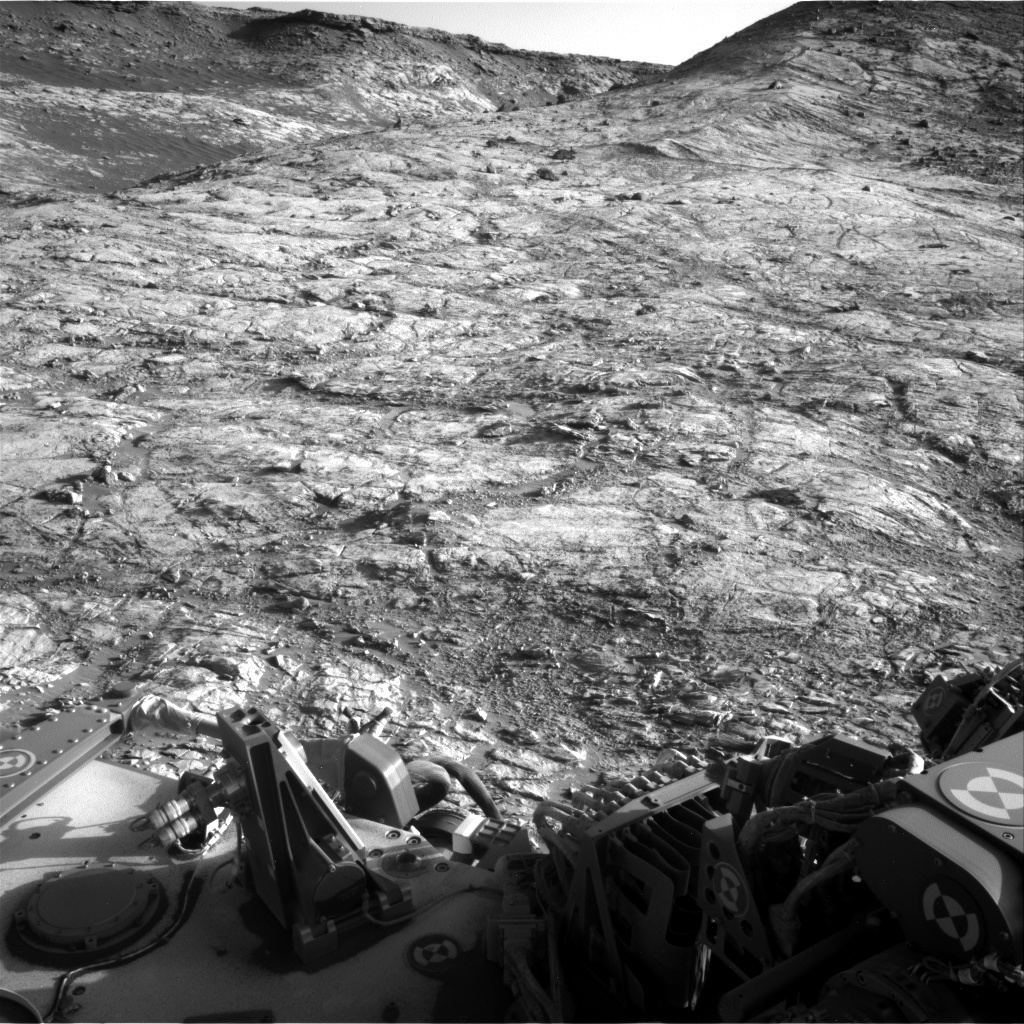3 min read

The nominal plan was to do a touch (contact science) and go (drive), as well as science observations with instruments located on Curiosity’s mast. However, we made a decision early on during planning to forgo the contact science in order to try and optimize the drive, hopefully resulting in some different looking rocks being in the workspace for the following plan.
We have been driving up in elevation (>300 m) through a thick sequence of predominantly lighter coloured, fine grained mudstones with minor sandstones, interpreted to have been deposited in a lake environment. We have been observing from a distance a layer of darker coloured, resistant rock, capping the top of several hills (or buttes) for some time now, and such a layer occurs at the top of “Western Butte,” the hill we have been climbing for the last week. We are hoping that the drive in tosol’s plan will put a block of this dark rock in front of the rover, so that Curiosity can use both arm- and mast-mounted instruments to investigate the cap rock. The geologists on the team (including myself) are excited to investigate this different looking material to see how the composition and texture differs from the dominant, light coloured mudstones we have been driving over for the last several years, and what this can tell us about the geological history of this area. We also want to compare it to other resistant, dark coloured, coarse grained sandstones overlying the mudstones, that we encountered earlier in the mission.
To make sure that we are continuing to document the textures and chemistry of the rocks beneath our wheels, two rock targets on the typical lighter coloured bedrock were chosen for investigation with ChemCam and Mastcam; “Kelvingrove” and "Keithick”. Additionally, the Mastcam will image an unusual hollowed out area in the workspace (“Barra Fan”) and an area with interesting textures, close to the planned end of drive location (“Hells Glen”). We will also acquire some longer distance Mastcam mosaics of the “Greenheugh Pediment“ (which we hope to start investigating next year) and an area behind the rover to look at the relationships of some of the different units we have previously encountered.
Standard REMS, DAN passive and active and RAD activities were also planned.
The team is excited to see what the workspace will have to offer after the drive; a treasure trove of goodies for Curiosity to enjoy over the holiday season?
Written by Lucy Thompson, Planetary Geologist at University of New Brunswick







